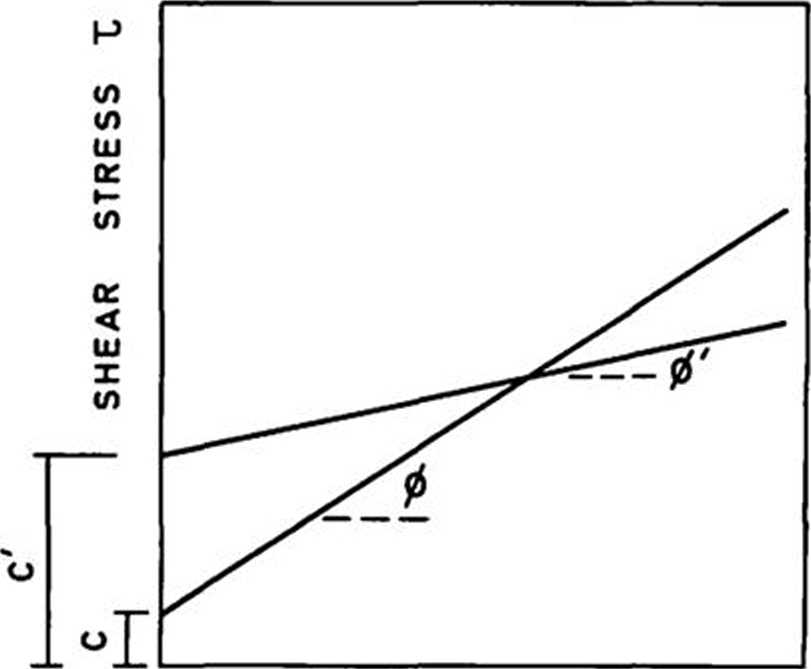6585844999
210
South Africa



The dynamie cone penetrometer has, how-ever, been used fairly extensively to es-tlmate the bearing capacity of subsoil strata in piling work. For practlcal purposes the cone penetrometer is then re-garded as being equivalent to the Raymond spoon in the standard penetration test and the evaluation of bearing capacity carried out accordingly. The N value is the number of blows for each 300 mm penetration of the cone.
A further recent use of the penetrometer has been to determine settlements in col-lapsing sands formed by insitu weathering of Halfway House granites near Pretoria. Predicted settlements in dry and satura-ted residual materiał were within 20 per-cent of those predicted from laboratory consolidation tests.
CBR Dynamie Cone Penetration Test.
Louw (1971) has proposed a raethod of es-timating the settlements of footings on sands which employs a correlation between CBR DCPT blow count and corrected SPT N. The method appears to have yielded satis-factory predictions in analysis of pre-viously published case histories involv-ing clayey sands, sands and gravels, but is too new to have been applied in con-trolled tests in practice.
Dutch Static Cone Penetrometer.
Evaluation of the results of Dutch static oone penetrometer tests in South Africa is based on the shielded type of cone that is employed with few, if any, exceptions. The theoretical background to the methods of interpretation of Dutch cone penetrometer data that have been employed in South Africa has been reviewed by Kantey (1951). This involves the expressions for compression index and shear strength given by De Beer (1945, 1948) from equa-tions derived by Buisman (1941), based on the fundamental equations of Prandtl and Caquot. The De Beer theory for the interpretation of penetrometer test data has also been reviewed by Sanglerat (1972).
De Beer regards the resistance to penetration of the cone, qc, as being a func-tion of the effective overburden pressure, Pb, the cohesion and angle of shearing resistance in terms of effective stress and the apparent cohesion and apparent angle of shearing resistance which both depend on the unknown degree of dissipa-tion of porę pressure during the test.
In their natural condition few cohesion-less soils are found with angles of in-temal friction less than 30 degrees.
Also few soils in which Dutch static cone penetration tests are performed have co-hesive strengths, in terms of effective stress, that are important. The practi-cal method of De Beer to solve the equa-tions for shear strength and compressibi-lity in terms of cone penetration resistance is then to introduce the approxima-tions that, in terms of effective stress, the cohesion, c, Figurę 7, is zero and the angle of intemal friction, <p, is 30 degrees.
It is shown that when 4> = 30 degrees
= *b-V"b,d <6>
where VMb ^ is a function of the apparent angle of friction <p9.

NORMAL STRESS (7
Fig. 7. Shear strength parameters in the theory of De Beer.
Reasonable values for the densities of the various soil layers, as reflected in a generał way by the variation in cone resistance with depth, are established and the value of p^ calculated for the layer under consideration. The value of qc/Pb is determined and used in Figurę 8 to obtain If the calculated value
of is found to be less than 30 degrees it is considered to be representative of the soil. If, however, the calculated value of is found to be greater than 30 degrees the calculated value is incora-patible with the assumed value of <ł> = 30 degrees. This occurs when the ratio qc/Pb exceeds 146,7. The failure enve-lope is then represented by a single straight linę passing through the origin with a slope of <$»' = <p and Equation (6) is then expressed as (7) where Vb ^ is a function of the angle of shearing resistance in terms of effective stress.
The variation in apparent angle of inter-nal friction with depth is plotted on a penetration diagram, as shown in Figurę 5, when information is required for sta-bility or bearing capacity analysis.
From experience in the Durban and Cape
Wyszukiwarka
Podobne podstrony:
207 South Africa The CBR penetrometer is intended for use where access is difficult for
214 South Africa the centres of the compaction the pres-ence of crushed stone in the sand subsoil do
716 or any other type of treatment. It has also been used in hydrology to model stream flow and prec
Penetration testing in South Africa esoptD.L. Webb State-of-the-
211 South Africa Fig. 8. Evaluation of in Dutch static cone penetration test. (10) ult Flats areas,
296 Sprawozdania i recenzje H. J. Deacon: Notę on the X-ray of two mounted implements from South Afr
BECKLEY (L.E.) 1984 : The ichthyofauna of the Sundays estuary, South Africa, with particular re
1 Physical Sciences NWO-NRF: Cooperation between the Netherlands and South Africa on Astronomy and E
I ntroductionBackground The Netherlands and South Africa have a joint interest in promoting and stre
I ntroductionBackground The Netherlands and South Africa have a joint interest in promoting and stre
165. Tnc deicgatiom of Bur ma and South Africa arc noc sarisncd that ihc nghts ani interesu of the b
India 176 2.3 DYNaMIC OONE PENETRATION TEST (65 mm cone wlth and wlthout slurry) It is a slmple devl
204 South Africa PENETRATION RESISTANCE DESCRIPTION Dark brown ioose fine SAND Dark yellowish brown
206 South Africa screwed to the end of a string of solid £lush jointed rods approximately 15 mra
208 South Africa Fj = Total Shaft Friction q c = Cone Resistance Fig. 5. Results of Dutch static con
213 South Africa strength determined from Eąuations (9A) and (9B) and the following
więcej podobnych podstron